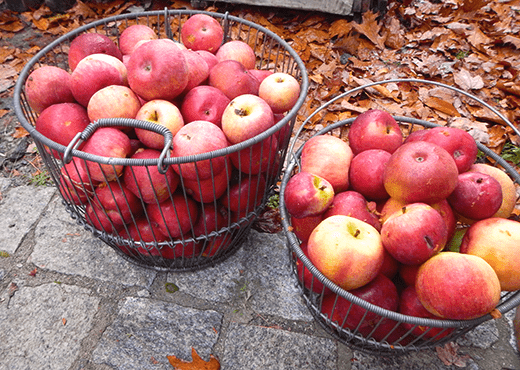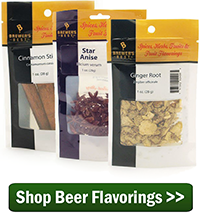 I recently shared my plans for making hard apple cider this year. Pasteurization and pitching the yeast was pretty straight forward, and for the first week or so fermentation chugged along without a hitch. The plan for secondary fermentation was to add hops to some of the cider, fruit and spices to some of it, and leave the rest plain.
I recently shared my plans for making hard apple cider this year. Pasteurization and pitching the yeast was pretty straight forward, and for the first week or so fermentation chugged along without a hitch. The plan for secondary fermentation was to add hops to some of the cider, fruit and spices to some of it, and leave the rest plain.
To make room for my Flower Power clone, I went ahead and transferred my cider into the three different fermenters and added the extra flavoring ingredients. Turns out, I might have done this a little early – my gravity was still about 1.025 – but like I said I needed the space.
Here’s how I went about racking the cider into three different fermenters:
1. Cleaned and sanitized all fermenters, transfer tubing, stoppers, and airlocks.
2. Filled the three-gallon carboy with about 1 ounce of hops that I had on hand: .5 ounce Palisade and .5 ounce Columbus.
3. Filled one of the one-gallon jugs with about 10 ounces of frozen blueberries, plus 5 grains of decorticated cardamom. Cardamom can be a pretty assertive spice, so I wanted to use a light hand.
4. The last one-gallon jug didn’t get any additions. It’s the “control” batch.
5. Racked the five gallons of juice from the 6 gallon carboy to the three gallon carboy and the two, 1-gallon jugs. This was a little tricky. There must be a good way to do this without getting juice on the floor, but I haven’t figured it out yet. One of these flow control hose clamps, or better yet, a siphon faucet, would probably help.
6. Sealed up each fermenter with a bung and airlock and return to the fermentation chamber.
Aside from some mess on the floor, making this hard apple cider had gone pretty easy. But within a day or so noticed an issue.
Since I wanted to avoid headspace and potential infection, I filled each fermenter to within an inch or so of the bung. Unfortunately, I found that transferring the cider and adding hops really agitated the hopped cider, so much so that it started pushing cider into the airlock and hops into the upper portion of the carboy – some of the hops didn’t have good contact with the cider.
I ended up using a sanitized auto-siphon to remove about a cup of cider from the fermenter. This gave the cider a little extra room for fermentation activity and it seemed to resolve the issue of clogging the airlock.
So after that relatively minor episode, the ciders continue to ferment away in the mid to upper 60s. Hopefully they will hurry up and finish so I can go ahead and bottle. With any luck, I’ll have three hard ciders to get me through the winter!
I’ve heard that cider takes time to age. What is your experience with making hard apple cider? How quickly can it be consumed? Share in the comments below!
Series: Part 1 | Part 2 | Part 3
———————————————————————-
David Ackley is a beer writer, homebrewer, and self-described “craft beer crusader.” He holds a General Certificate in Brewing from the Institute of Brewing and Distilling and is founder of the Local Beer Blog.
